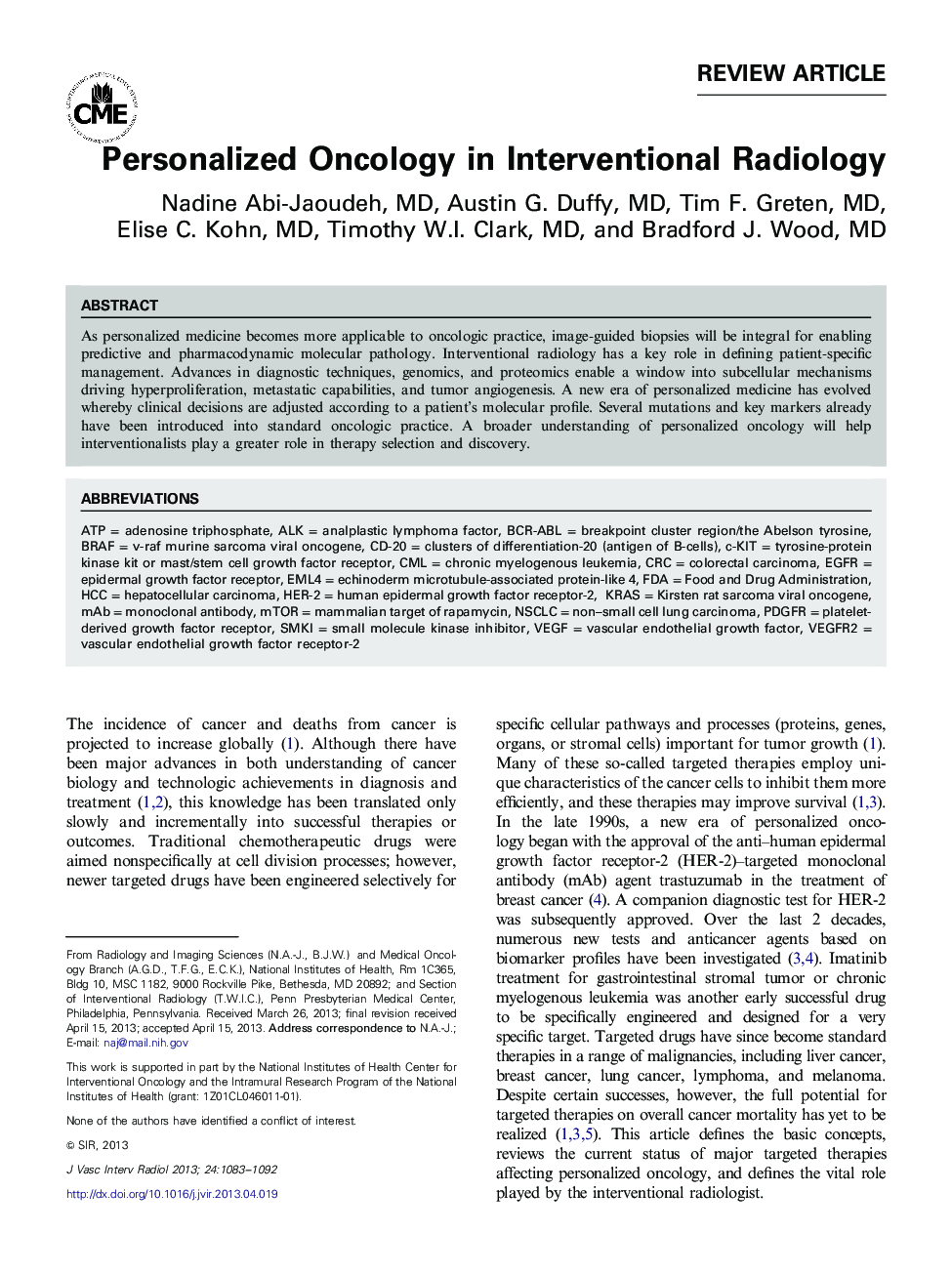| Article ID | Journal | Published Year | Pages | File Type |
|---|---|---|---|---|
| 4237841 | Journal of Vascular and Interventional Radiology | 2013 | 10 Pages |
Abstract
As personalized medicine becomes more applicable to oncologic practice, image-guided biopsies will be integral for enabling predictive and pharmacodynamic molecular pathology. Interventional radiology has a key role in defining patient-specific management. Advances in diagnostic techniques, genomics, and proteomics enable a window into subcellular mechanisms driving hyperproliferation, metastatic capabilities, and tumor angiogenesis. A new era of personalized medicine has evolved whereby clinical decisions are adjusted according to a patient's molecular profile. Several mutations and key markers already have been introduced into standard oncologic practice. A broader understanding of personalized oncology will help interventionalists play a greater role in therapy selection and discovery.
Keywords
VEGFR2Echinoderm microtubule-associated protein-like 4EML4FDABCR-ABLkirsten rat sarcoma viral oncogenePDGFRHER-2BRAFc-kitCMLmTORKRASEGFRmAbHCCAdenosine TriphosphateATPALKMonoclonal antibodyFood and Drug Administrationcolorectal carcinomaNSCLCVascular endothelial growth factorVascular Endothelial Growth Factor (VEGF)chronic myelogenous leukemiamammalian target of rapamycinNon–small cell lung carcinomaHepatocellular carcinomaCRCVascular endothelial growth factor receptor-2platelet-derived growth factor receptorEpidermal growth factor receptorHuman epidermal growth factor receptor-2
Related Topics
Health Sciences
Medicine and Dentistry
Radiology and Imaging
Authors
Nadine MD, Austin G. MD, Tim F. MD, Elise C. MD, Timothy W.I. MD, Bradford J. MD,
